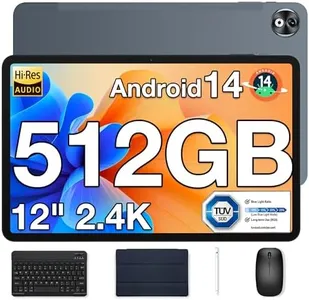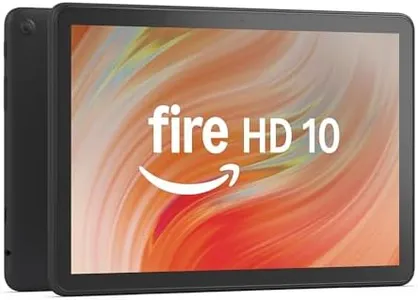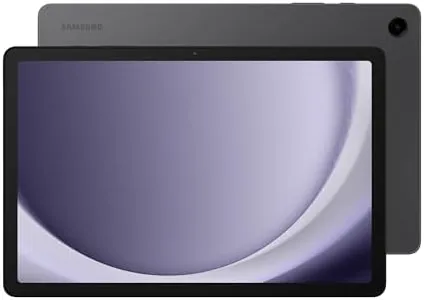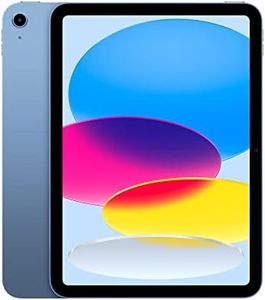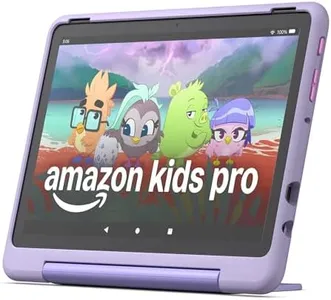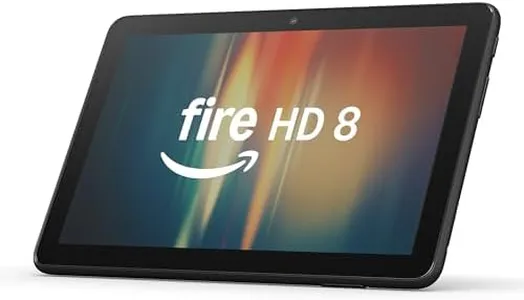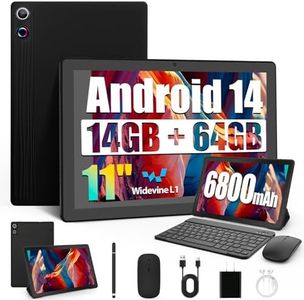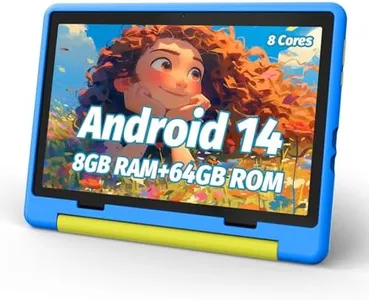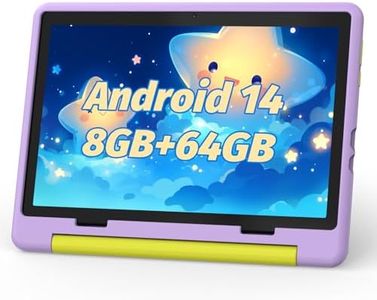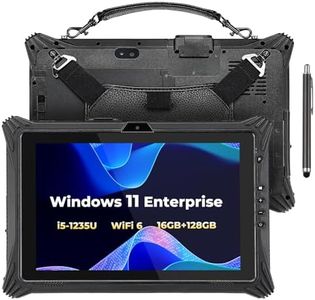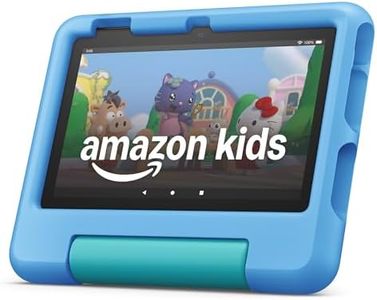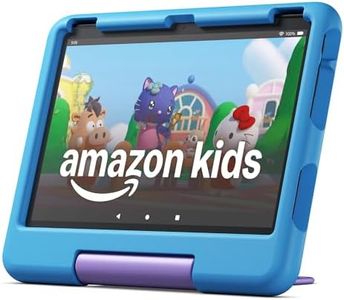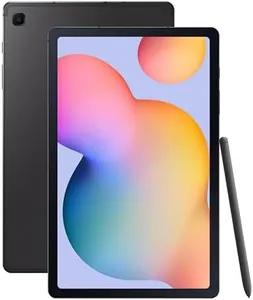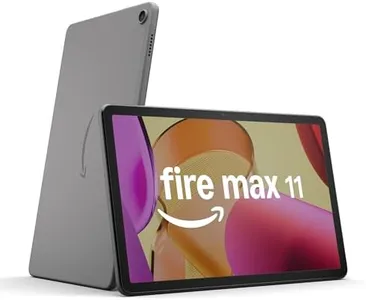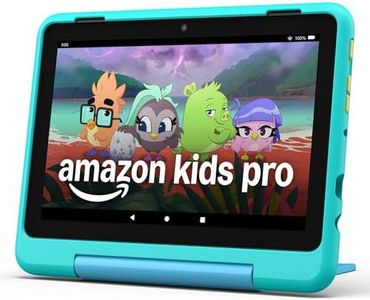10 Best Tablets 2025 in the United States
Our technology thoroughly searches through the online shopping world, reviewing hundreds of sites. We then process and analyze this information, updating in real-time to bring you the latest top-rated products. This way, you always get the best and most current options available.

Our Top Picks
Winner
Amazon Fire HD 10 tablet (newest model) built for relaxation, 10.1" vibrant Full HD screen, octa-core processor, 3 GB RAM, 32 GB, Black
Most important from
23565 reviews
The Amazon Fire HD 10 tablet is a solid choice for anyone seeking a versatile and affordable device. Its 10.1-inch Full HD display delivers vibrant visuals, making it great for streaming movies, playing games, or reading. With an octa-core processor and 3 GB of RAM, it offers improved performance, up to 25% faster than its predecessor, which is beneficial for multitasking and smooth operation.
One of its standout features is the impressive battery life, lasting up to 13 hours, catering to users who enjoy extended entertainment without frequent charging. The tablet supports up to 1 TB of expandable storage through a micro-SD card, which is a significant advantage for those who store large amounts of content.
The lightweight and durable design, reinforced with aluminosilicate glass, makes it suitable for on-the-go use, and it even includes parental controls for family-friendly usage. Alexa integration is a nice touch, providing convenience for voice commands and smart home control. While it has decent camera quality with 5 MP front and rear-facing cameras, they may not satisfy users seeking high-quality photography. The lack of support for Wi-Fi 6 might also be a drawback for those who want faster internet speeds. Additionally, some users may find the pre-installed Amazon services limiting compared to tablets running other operating systems. The Fire HD 10 tablet excels in providing an enjoyable entertainment experience, practical performance, and good battery life for casual users, families, and avid readers. However, users looking for advanced camera capabilities or high-end specifications may want to consider other options.
Most important from
23565 reviews
Samsung Galaxy Tab A9+ Tablet 11” 64GB Android Tablet, Big Screen, Quad Speakers, Upgraded Chipset, Multi Window Display, Slim, Light, Durable Design, US Version, 2024, Graphite
Most important from
11057 reviews
The Samsung Galaxy Tab A9+ offers a family-friendly experience with its 11-inch screen, boasting a 1920 x 1200 resolution that is great for videos, games, and general use. The quad speakers with Dolby Atmos provide an immersive audio experience, enhancing entertainment. Powered by the Qualcomm Snapdragon 69 processor with either 4GB or 8GB of RAM, the tablet supports seamless multitasking and runs apps smoothly. Storage options include 64GB or 128GB, expandable up to 1TB, which is ample for most users' needs.
The tablet's design is slim, light, and durable, making it easy to carry around. It operates on the Android system, ensuring a user-friendly interface and access to a wide range of apps. Connectivity options include Wi-Fi 802.11ac, and features like Quick Share and Smart View enhance usability. The inclusion of the Samsung Kids app makes it a solid choice for families with children, providing safe and engaging content. However, the camera quality isn't highlighted, which could be a potential drawback for users who need high-quality photo capabilities.
This Galaxy Tab A9+ is a versatile and practical choice for everyday use, entertainment, and family activities.
Most important from
11057 reviews
Apple iPad (10th Generation): with A14 Bionic chip, 10.9-inch Liquid Retina Display, 64GB, Wi-Fi 6, 12MP front/12MP Back Camera, Touch ID, All-Day Battery Life – Blue
Most important from
27609 reviews
The Apple iPad (10th Generation) stands out with its 10.9-inch Liquid Retina display, offering vibrant and sharp visuals. Powered by the A14 Bionic chip, it ensures smooth performance for various activities, from gaming to video editing. With options of 64GB or 256GB storage, users can choose based on their needs, though the base 64GB may feel limiting for heavy users. The all-day battery life is a big plus, making it reliable for long usage without frequent recharging.
The iPadOS enhances productivity with multitasking capabilities and a wide array of available apps. The inclusion of Wi-Fi 6 ensures fast and stable internet connectivity. For creative tasks, it supports the Apple Pencil (1st generation) and the Magic Keyboard Folio, though these accessories are sold separately. The 12MP front and back cameras provide high-quality photos and 4K video recording, with the front camera's Center Stage feature being particularly useful for video calls.
Touch ID adds a layer of security and convenience. However, the absence of support for the latest Apple Pencil (2nd generation) may be a drawback for some users. The iPad is lightweight and portable, weighing just over a pound, making it easy to carry around. This tablet is particularly suitable for users looking for a versatile device for both work and entertainment, but those needing more storage or the latest accessories might want to consider other options.
Most important from
27609 reviews
Buying Guide for the Best Tablets
Choosing the right tablet can greatly enhance your digital experience, whether it's for work, entertainment, or education. To make an informed decision, it's important to understand the key specifications and how they align with your needs. Here are the main specs to consider when selecting a tablet, along with explanations to help you navigate through them.FAQ
Most Popular Categories Right Now
